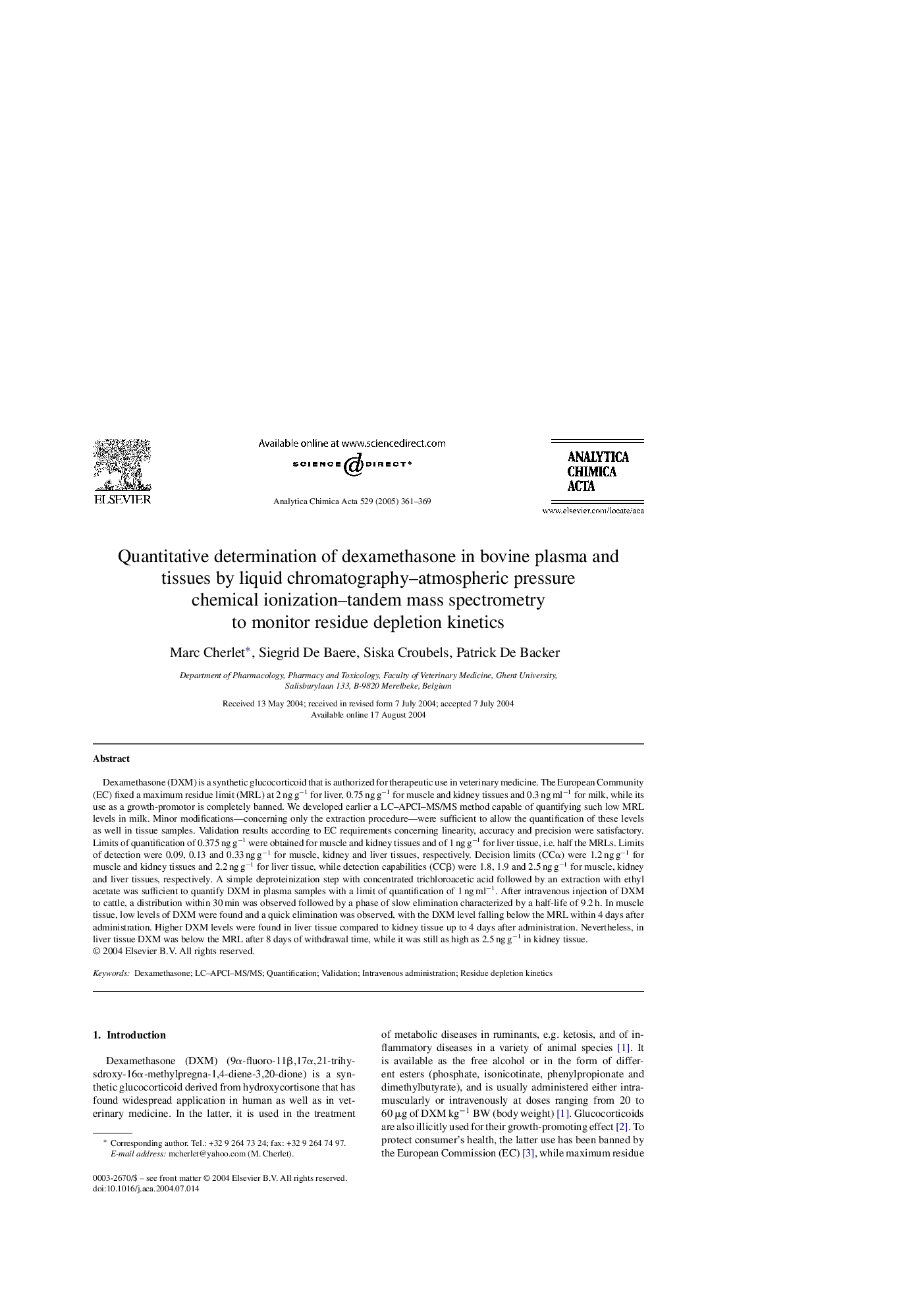| Article ID | Journal | Published Year | Pages | File Type |
|---|---|---|---|---|
| 9743979 | Analytica Chimica Acta | 2005 | 9 Pages |
Abstract
Dexamethasone (DXM) is a synthetic glucocorticoid that is authorized for therapeutic use in veterinary medicine. The European Community (EC) fixed a maximum residue limit (MRL) at 2 ng gâ1 for liver, 0.75 ng gâ1 for muscle and kidney tissues and 0.3 ng mlâ1 for milk, while its use as a growth-promotor is completely banned. We developed earlier a LC-APCI-MS/MS method capable of quantifying such low MRL levels in milk. Minor modifications-concerning only the extraction procedure-were sufficient to allow the quantification of these levels as well in tissue samples. Validation results according to EC requirements concerning linearity, accuracy and precision were satisfactory. Limits of quantification of 0.375 ng gâ1 were obtained for muscle and kidney tissues and of 1 ng gâ1 for liver tissue, i.e. half the MRLs. Limits of detection were 0.09, 0.13 and 0.33 ng gâ1 for muscle, kidney and liver tissues, respectively. Decision limits (CCα) were 1.2 ng gâ1 for muscle and kidney tissues and 2.2 ng gâ1 for liver tissue, while detection capabilities (CCβ) were 1.8, 1.9 and 2.5 ng gâ1 for muscle, kidney and liver tissues, respectively. A simple deproteinization step with concentrated trichloroacetic acid followed by an extraction with ethyl acetate was sufficient to quantify DXM in plasma samples with a limit of quantification of 1 ng mlâ1. After intravenous injection of DXM to cattle, a distribution within 30 min was observed followed by a phase of slow elimination characterized by a half-life of 9.2 h. In muscle tissue, low levels of DXM were found and a quick elimination was observed, with the DXM level falling below the MRL within 4 days after administration. Higher DXM levels were found in liver tissue compared to kidney tissue up to 4 days after administration. Nevertheless, in liver tissue DXM was below the MRL after 8 days of withdrawal time, while it was still as high as 2.5 ng gâ1 in kidney tissue.
Related Topics
Physical Sciences and Engineering
Chemistry
Analytical Chemistry
Authors
Marc Cherlet, Siegrid De Baere, Siska Croubels, Patrick De Backer,
